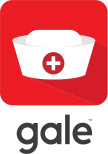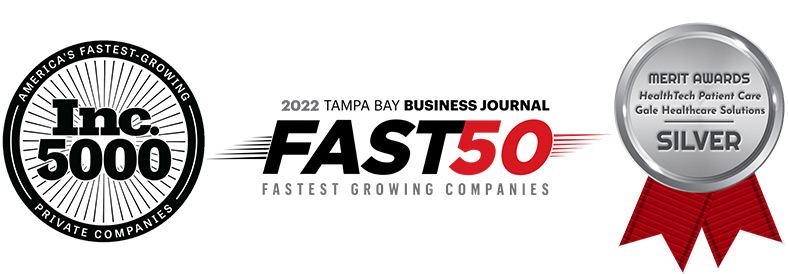
Technology has changed the way nurses and nurse aides care for their patients and residents, and its impact on healthcare will continue to evolve as innovation continues. Some people see this as a positive, citing the time-saving benefits that technological advances provide. Others take a less-than-enthusiastic view, suggesting the increased reliance on technology leads to a decrease in personal interaction between nurse and patient.
While individuals on both sides of the debate offer a combination of statistical and anecdotal evidence to support their arguments, it’s important to remember that the overwhelming majority of nurses are in favor of technology that helps improve patient care. In fact, in a recent survey of 600 nurses, 82% shared that they have a favorable view of nursing technology.1
What is nursing technology?
Nursing technology is medical technology designed to help RNs, LPNs, and other nursing professionals care for their patients more effectively. With examples ranging from small mobile devices to automated medication delivery systems, nursing technology is a broad category. It only takes a quick glance around any medical facility to see how prevalent healthcare technology has become. Yet, despite the advances and enhancements tech solutions have brought to the medical industry, there are still benefits and drawbacks to its widespread use.
Advantages and disadvantages of nursing technology
Nursing Technology Advantages
- Faster communication
Thanks to mobile technology and online resources, nurses find it easier than ever to coordinate with their team members, update patient charts, and relay up-to-the-minute information to the doctors responsible for determining treatment plans. - Increased efficiency
From checking vital signs to monitoring IV flow rates to keeping up with medication schedules, many of the most tedious nursing activities can now be automated with specialized equipment. The automation of routine tasks helps reduce instances of human error and accidental oversights. - Improved access to patient records
Rather than searching for and keeping up with paper medical charts — not to mention trying to decipher the handwriting of multiple individuals — nurses who work for facilities that use electronic medical records can access their patients’ medical histories and make updates instantly. - Burnout prevention
In many regions of the country, staffing shortages and increasing patient loads lead to nurses working longer hours and caring for more individuals during their shifts. By helping nurses operate more efficiently, nursing technology reduces some of the most time-consuming aspects of the job, which can help relieve much of the stress that results in nurses leaving their practice.
Nursing Technology Disadvantages
- Implementation challenges
Medical technology is designed to make healthcare more efficient, but its implementation can often be a point of contention for nurses and medical staff responsible for patient care during the integration process. While the end result may be positive, the introductory phase can cause frustration. - Steep learning curves
After new medical technology is installed and ready for use, nurses need to be trained on its proper usage. This training period can be frustrating, as it requires nurses to learn a new way to do processes they were already comfortable doing another way. - Equipment malfunction
Technology is great — when it works. With nursing technology, equipment problems can be even more frustrating and consequential because optimal patient care depends on it. And the more technology a medical facility uses, the greater the chance of disruption due to equipment problems. - Overreliance on machines
Of all the objections to nursing technology, its impact on personal attention may be the point raised most often. Some believe that when nurses count on machines to monitor patient conditions, they will, over time, pay less attention to their patients unless the technology alerts them to a critical need.
10 best examples of nursing technology
In the pursuit of improved patient care, nursing technology continues to evolve at a rapid pace. Below are ten examples of technological advances that are helping nurses provide better care and experience more job satisfaction.
1. Telehealth
One of the newest developments in electronic healthcare technology, telehealth applications enable doctors and nurses to provide essential care for patients who may not be able to visit a medical facility in person. Through convenient video conferencing, medical professionals can meet with individuals, assess their condition based on presenting symptoms, and determine whether a physical office visit is required or treatment can be prescribed based on existing symptoms.
2. Electronic Health Records (EHR)
These digital records combine a patient’s facility-specific medical records — usually stored as Electronic Medical Records (EMR) — with more comprehensive health information that can help medical providers of all types provide the best overall care possible. And since they’re stored digitally, these records don’t require the massive amounts of physical space that traditional medical records once did — an improvement welcomed by medical records technicians worldwide.
3. Point-of-care technology
Whether it’s a handheld tablet in a doctor’s office, a laptop in a long-term care facility, or a mobile computer cart in a hospital, point-of-care (PoC) technology gives nurses the ability to take patient reports, update records, and create treatment plans without leaving the room. This instant care reduces distraction-related errors and helps patients and residents feel as if their concerns are instantly addressed, which has a direct impact on their overall satisfaction with the care they receive.
4. Electronic lift systems & smart beds
Many times, nursing technology streamlines informational processes. However, in the case of electronic lifts and smart beds, these advancements address a practical, physical challenge. By using mechanical lifts, nurses can help patients who cannot stand or walk get into their bed without assistance from additional medical staff members. Smart beds simplify the health monitoring process by using integrated sensors to automatically track patient vital signs such as heart rate, blood oxygen, weight, and temperature.
5. Digital monitors
Even when they’re not built into a smart hospital bed, electronic monitors help nurses keep track of their patients’ vital signs. By automatically monitoring and recording pulse rate, ECG, oxygen levels, respiratory rates, and more, these monitors free nurses to focus on other aspects of patient care, increasing overall efficiency. Additionally, these monitors can alert medical staff when vitals reach dangerous levels, which is especially helpful when nurses are responsible for many patients at once.
6. Automatic IV pumps
IV pumps play an integral role in patient care, especially in acute care facilities. And while they offer an efficient delivery system for patient nutrition and medication, IV placement and maintenance can be time-consuming when done manually. Automatic pumps allow nurses to program drip rates and medication dosage and delivery intervals, reducing the risk of human error throughout the patient’s stay.
7. Wearable technology
More than any other advancement, wearable technology devices allow nurses to engage with their patients even when they’re not physically in the medical facility. Thanks to medical innovation and mobile technology, many monitors traditionally used in healthcare facilities (i.e., heart rate, blood oxygen, blood pressure, ECG, etc.) are now available as devices that patients can wear at home. By allowing nurses to track patient health outside of clinical settings, wearable technology is raising the level of care for acute conditions and chronic health issues.
8. Smartphones
While not originally developed as nursing technology, smartphones have paved the way for smooth, efficient communication between patients and healthcare professionals. Not only do smartphones provide easy calling and texting capabilities regardless of location, but mobile apps can also work with medical monitoring devices to automatically relay essential health information to doctors and nurses.
9. Training & education
Traditionally, nurses who wanted to further their education or complete continuing education requirements had to attend classes or sessions that may interfere with their work schedules. The explosion of online education options has drastically reduced the need for in-person classes and empowered nurses to improve their skills and advance their careers while still doing the work they love.
10. Scheduling applications
Nursing is a diverse profession that offers multiple employment options ranging from full-time work to per diem nursing positions. For nurses who want to maintain flexibility in their schedule, finding consistent work opportunities can be challenging. Now, thanks to mobile scheduling solutions like the Gale App, nurses and nurse aides can control their schedule, working only the shifts they want to work and enjoying the financial stability of daily pay.
Gale uses technology to give nurses control of their schedules
If you are an RN, LPN, CNA, or other nursing professional, Gale gives you the ability to set your schedule and choose the shifts that fit your lifestyle. If you’re ready to work when you want and collect your earnings as soon as your shift is over, apply to join the Gale family today!
1 https://www.linkedin.com/pulse/artificial-intelligence-could-completely-transform-patient-kutscher/



